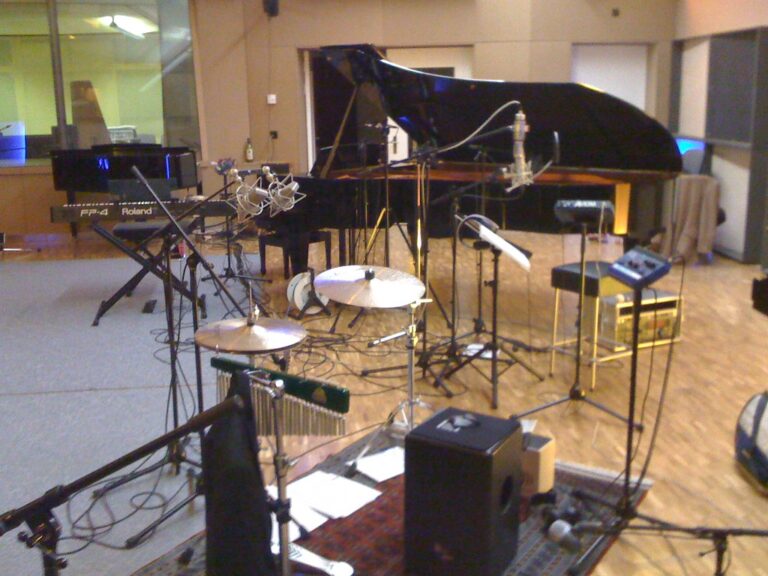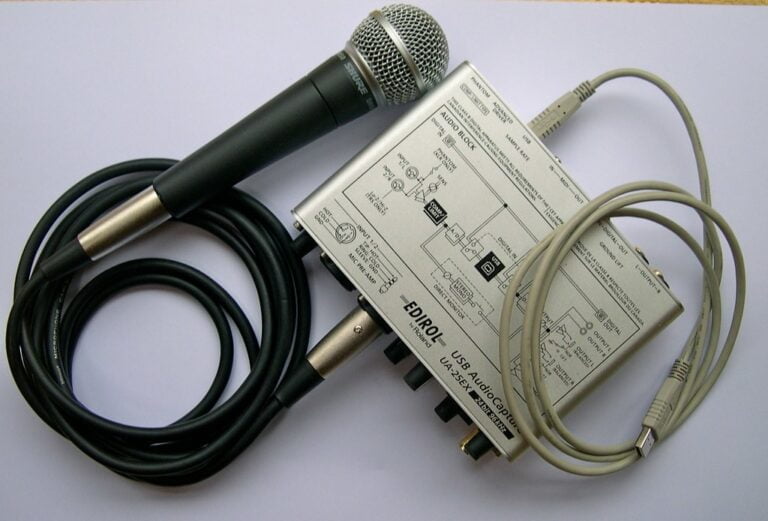Microphone Polar Patterns: A Guide to Choosing the Right Pickup Pattern
Hey there! Are you struggling to find the right microphone pickup pattern for your recording needs? Well, worry no more, my friend! In this handy guide, we'll take you on a journey through the world of microphone polar patterns, helping you choose the perfect one for your recordings. Whether you're looking for versatility, all-around sound capture, stereo recording, or precise directionality, we've got your back!
We are supported by our audience. When you purchase through links on our site, we may earn an affiliate commission, at no extra cost for you. Learn more.
Imagine this guide as your trusty sidekick, guiding you towards the best microphone polar pattern to elevate your recordings to the next level. So, let's jump right in and explore the wonderful world of polar patterns!
First things first, let's keep things casual and have a chat about what microphone polar patterns actually are. These patterns determine how a microphone captures sound from different directions. Think of it like a microphone's superpower, allowing it to focus on specific areas or capture sound from all around like a musical superhero.
Now, as you embark on your microphone polar pattern quest, you'll come across a variety of options. But fear not, we're here to break it down for you in simple terms. We'll help you understand the different types of patterns and how they can work wonders for your recordings.
Are you craving versatility in your recordings? Well, then you might want to consider a microphone with an omnidirectional polar pattern. This pattern captures sound from all directions, making it perfect for capturing the ambiance of a room or recording a group of people jamming together.
If you're a fan of capturing stereo sound, like the immersive experience of being at a live concert, then a stereo microphone with a figure-8 polar pattern might be just what you need. This pattern picks up sound from the front and back, creating a lifelike stereo effect that envelops your listeners.
Now, let's say you're all about capturing sound from a specific direction, like a laser-focused audio ninja. In that case, a microphone with a cardioid polar pattern is your go-to choice. This pattern captures sound mainly from the front while minimizing background noise, giving you crystal-clear recordings of your main audio source.
But wait, there's more! If you're in need of even more precision, you can explore supercardioid and hypercardioid polar patterns. These patterns offer even tighter focus on the sound source, minimizing side and rear noise even further. It's like having a microphone that can zoom in on the audio you want with surgical precision.
So, my friend, armed with this knowledge of microphone polar patterns, you're now equipped to make an informed decision. The right polar pattern will be your trusted companion on your recording journey, capturing sound with the accuracy and style you desire.
Remember, don't be afraid to experiment and find the pattern that suits your recording needs best. Each pattern has its own unique flavor, and it's up to you to find the one that brings out the best in your recordings.
Now go forth, explore the world of microphone polar patterns, and let your recordings shine like never before! Happy recording!
Cardioid: The Most Versatile Polar Pattern
Choose the cardioid polar pattern for the most versatile microphone pickup pattern. The cardioid pattern is widely regarded as the go-to choice for capturing sound in a variety of recording and live sound applications. This polar pattern is named after its heart-shaped pickup pattern, with the microphone's sensitivity focused on the sound source directly in front, while also reducing unwanted noise from the sides and rear. The cardioid pattern offers a great balance between capturing the desired audio source and rejecting background noise, making it ideal for vocal performances, podcasts, and instrument recordings. Its versatility allows for optimal sound isolation and minimal feedback, making it a popular choice for both professional and amateur audio enthusiasts. With its precise and focused pickup, the cardioid polar pattern ensures top-notch audio quality and an immersive listening experience.
Omnidirectional: Capturing Sound From All Directions
To capture sound from all directions, consider the omnidirectional polar pattern. This pickup pattern is perfect for situations where you need to capture a wide range of sound sources without any directional bias. With an omnidirectional microphone, you can capture sound equally from all angles, allowing for a more natural and immersive listening experience. This pattern is achieved by placing multiple microphone capsules around the microphone's diaphragm, which ensures that sound is picked up from all directions. The omnidirectional pattern is ideal for recording live performances, conferences, and group discussions, where you want to capture the ambient sound of the environment. Additionally, it is commonly used in professional audio applications such as film production, broadcasting, and field recording. Embrace the omnidirectional polar pattern for a versatile and inclusive sound capturing experience.
Figure-Eight: Ideal for Stereo Recording
For stereo recording, the figure-eight polar pattern is the ideal choice as it captures sound from both the front and back of the microphone while rejecting sound from the sides. This unique pattern creates a bidirectional pickup, making it perfect for recording two sound sources in a stereo configuration. By placing the microphone perpendicular to the sound sources, you can capture a balanced stereo image with a clear separation between the left and right channels. The figure-eight polar pattern is commonly used for recording instruments such as pianos, acoustic guitars, and vocal duets. Additionally, it allows for versatile microphone placement options, enabling you to experiment and achieve different stereo perspectives. Whether you are recording in a studio or a live setting, the figure-eight polar pattern offers a reliable and innovative solution for capturing high-quality stereo recordings.
Hypercardioid: Narrow Focus With Minimal Background Noise
When considering stereo recording, the figure-eight polar pattern is the ideal choice as it captures sound from both the front and back of the microphone while rejecting sound from the sides. Moving on to the next subtopic, if you are looking for a narrow focus with minimal background noise, the hypercardioid polar pattern is the option to consider. The hypercardioid pattern offers a narrower pickup angle compared to the cardioid pattern, allowing you to capture sound from a specific direction while minimizing unwanted noise from the sides. This makes it perfect for recording in noisy environments or when you need to isolate a specific sound source. With its focused pickup pattern, the hypercardioid microphone provides excellent off-axis rejection, ensuring that the background noise remains minimal.
Shotgun: Long-Distance Recording With Precise Directionality
If you need to record audio from a long distance with precise directionality, the shotgun polar pattern is the perfect choice. This polar pattern is commonly used in film and television production, as well as in sports broadcasting, where capturing sound from a distance is essential. The shotgun microphone has a long, narrow pickup pattern that allows it to focus on the sound source while minimizing background noise. It achieves this by using interference tubes that block off-axis sounds and only capture audio from the front. This design results in a highly directional microphone that excels at picking up sound from a specific point, even from a distance. Whether you're capturing dialogue on a film set or recording wildlife in nature, the shotgun polar pattern is an innovative solution that ensures your audio is clear and focused.
Conclusion
In conclusion, understanding microphone polar patterns is crucial for choosing the right pickup pattern for your recording needs. The cardioid pattern offers versatility, while the omnidirectional pattern captures sound from all directions. The figure-eight pattern is ideal for stereo recording, and the hypercardioid pattern provides a narrow focus with minimal background noise. Lastly, the shotgun pattern is perfect for long-distance recording with precise directionality. By considering these options, you can ensure that your recordings are of the highest quality and meet your specific requirements.







